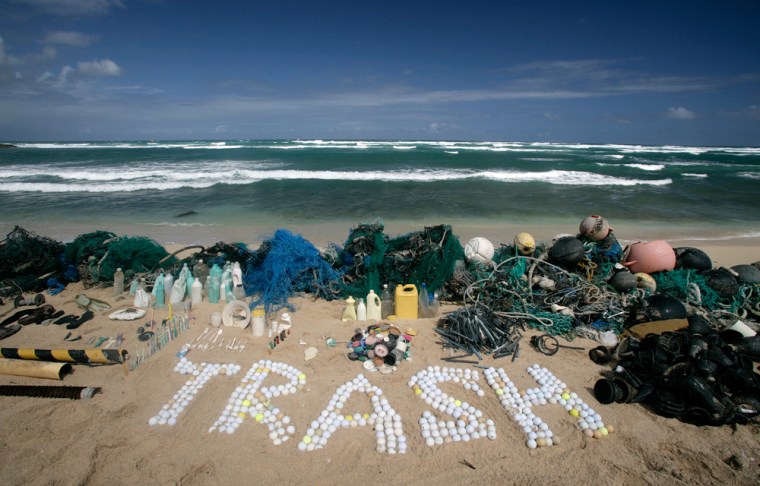Greenpeace activists aboard a ship off Hawaii have been retrieving old toothbrushes, beach toys, golf balls and even used condoms from a vast vortex of plastic trash in the Pacific Ocean that threatens sea creatures that get tangled in it, eat it or ride on it.
Because plastic doesn’t break down the way organic material does, ocean currents and tides have carried it thousands of miles to an area between Hawaii and the West Coast.
This swirling vortex, which has been documented for years and can grow to be about the size of Texas, is not far from the Northwestern Hawaiian Islands, designated as a protected U.S. national monument in June by President Bush.
In a new report, Greenpeace said at least 267 species -- including seabirds, turtles, seals, sea lions, whales and fish -- are known to have suffered from entanglement or ingestion of marine debris.
Some 80 percent of this debris comes from land and 20 percent from the oceans, the report said, with four main sources: tourism, sewage, fishing and waste from ships and boats.
The report comes days after a report in the journal Science projected that Earth’s stocks of fish and seafood would collapse by 2050 if trends in overfishing and pollution continue.
Barnacles and free rides
Plastic pollution is a problem in all the world’s oceans, the Greenpeace report said, but underlined the issue in the Pacific by sailing through the floating garbage dump and capturing images of wildlife interacting with plastic.
“It’s not necessarily an area that’s clearly defined; it’s sort of a natural phenomenon ... wind and salt water break down the plastic,” said Steve Smith from aboard the Greenpeace ship Esperanza.

The plastic trash, some in large pieces and others broken down to small but recognizable particles, is visible from the ship’s deck, Smith said by telephone. Inflatable boats are dispatched from the ship to collect samples.
“We’ve been been unfortunately finding a lot of stuff out here, floating by, which doesn’t paint a very good picture, because some of it is from faraway places, has marine life like barnacles and other little creatures living on the plastic,” Smith said.
By hitching rides on plastic debris, invasive species can be carried thousands of miles to interact with native creatures, Smith said. Plastic also poses a hazard to animals that mistake it for prey and eat it, he said.
Albatrosses eating plastic
“Plastics in the oceans act as a toxic sponge, soaking up a lot of the persistent pollutants out here,” Smith said. “We’ve seen photos of albatrosses who eat this plastic ... Even though their stomachs are filled, they end up starving because there’s no nutrients in there.”
Discarded or lost fishing nets and traps can continue to catch fish when they are no longer in use, the report said.
The report said an international agreement known as MARPOL is aimed at ending the dumping of plastic debris at sea, but noted that since most debris originates on land, even total enforcement of this agreement would not eliminate the problem.
Greenpeace called for a global network of marine reserves, covering 40 percent of the world’s oceans, and responsibility by coastal countries to cut down on “excessive consumption” and boost recycling.
